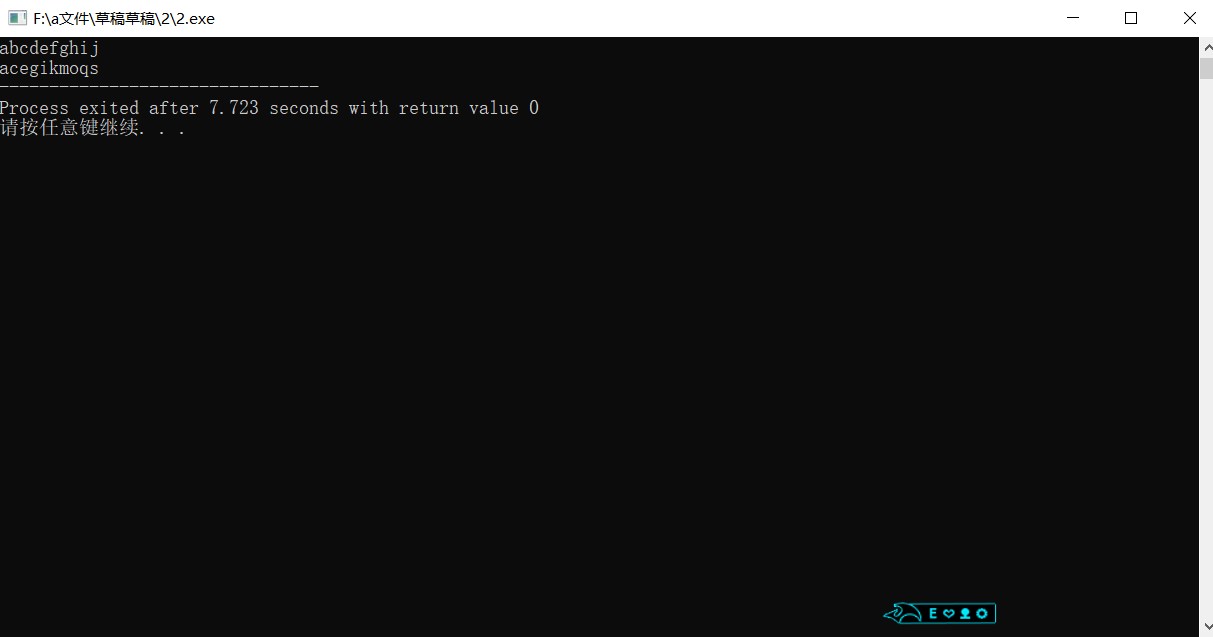BUUCTF—Re—reverse3
主函数代码:
int __cdecl main_0(int argc, const char **argv, const char **envp) { size_t v3; // eax const char *v4; // eax size_t v5; // eax char v7; // [esp+0h] [ebp-188h] char v8; // [esp+0h] [ebp-188h] signed int j; // [esp+DCh] [ebp-ACh] int i; // [esp+E8h] [ebp-A0h] signed int v11; // [esp+E8h] [ebp-A0h] char Destination[108]; // [esp+F4h] [ebp-94h] BYREF char Str[28]; // [esp+160h] [ebp-28h] BYREF char v14[8]; // [esp+17Ch] [ebp-Ch] BYREF for ( i = 0; i < 100; ++i ) { if ( (unsigned int)i >= 0x64 ) j____report_rangecheckfailure(); Destination[i] = 0; } sub_41132F("please enter the flag:", v7); sub_411375("%20s", (char)Str); v3 = j_strlen(Str); v4 = (const char *)sub_4110BE(Str, v3, v14);//这里是base64加密,把v4加密, strncpy(Destination, v4, 0x28u);//然后把v4复制给Dest数组 v11 = j_strlen(Destination); for ( j = 0; j < v11; ++j )//Dest数组的每个字符加自身(ASCII码相加) Destination[j] += j; v5 = j_strlen(Destination); if ( !strncmp(Destination, Str2, v5) )//如果Dest和Str2相等,那么flag就是对的 sub_41132F("rigth flag!\n", v8); else sub_41132F("wrong flag!\n", v8); return 0; }
Str2可以追踪路径到:

注意:这里要加上0
大概意思就是,先把输入的字符串base64加密,然后再向前位移,最后和Str2比
这里有个例子,对于‘Destination[j] += j;’这个的解释,
代码:
#include<stdio.h> #include<string.h> int main() { char z[10]; gets(z); for(int i=0; i<strlen(z); i++) { z[i]+=i; } for(int j=0; j<strlen(z); j++) { printf("%c",z[j]); } return 0; }
运行结果:

可以看到输入的字符向后位移了数组下标位,那么脚本思路就是先把Str2减回去,再base64解密:
先是c语言版,因为没有base64解密函数,所以就只解到了base64加密这步,然后再base64解密就可以得到flag。
#include<stdio.h> #include<string.h> int main() { char z[]={'e','3','n','i','f','I','H','9','b','_','C','@','n','@','d','H','0'}; for(int i=0; i; i--) { z[i]-=i; } for(int j=0; j<strlen(z); j++) { printf("%c",z[j]); } return 0; }
Python就可以直接出:
import base64 list=['e','3','n','i','f','I','H','9','b','_','C','@','n','@','d','H','0'] for i in range(len(list)): list[i]=chr(ord(list[i])-i) a=''.join(list) print(base64.b64decode(a))
flag{i_l0ve_you}


